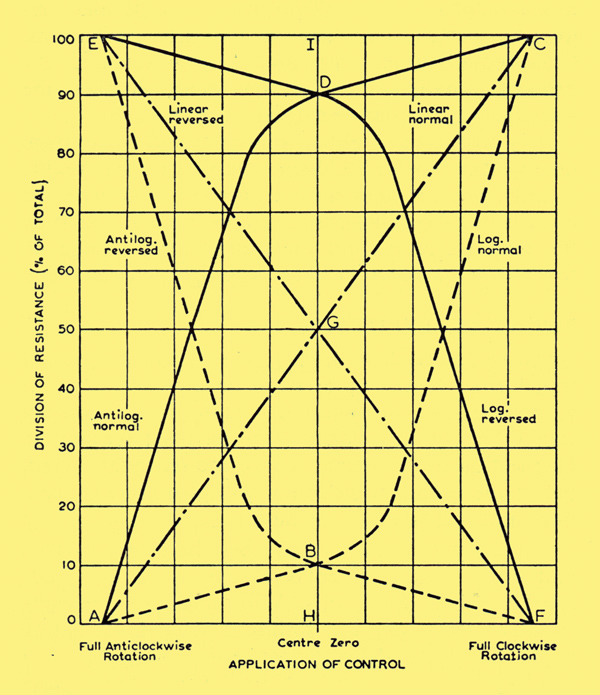|

Potentiometer characteristics
The balance control in stereophonic equipment will often consist of dual-gang potentiometers connected in the grid circuits of corresponding valves in each channel. One of the potentiometers will be connected normally with its minimum-resistance end earthed and the other will be connected in reverse with its maximum-resistance end earthed. The ganged potentiometers could either be a pair of linear-law potentiometers or one logarithmic-law and one anti-logarithmic-law potentiometer. The characteristics of these components, connected normally and in reverse, are shown below.
The lines AGC and EGF are the characteristics of normally and inversely connected linear potentiometers respectively. If these are used for the balance control, then the need for the centre-zero arrangement will give an operating point at the intersection G o the two characteristics. The resistance corresponding to IG will appear in series with each grid, and that represented by GH will be between the grid and earth. The signal attenuation caused in each channel by this arrangement will thus be 50%.
The curves EDF and ADC are respectively the characteristics of a logarithmic potentiometer connected in reverse and an anti-logarithmic potentiometer connected normally. The operating point with this combination would be the intersection D, and the signal attenuation in the zero position of the control would be only ID/IH. For potentiometers obeying a 10% logarithmic law, the attenuation would thus only be 10%.
|